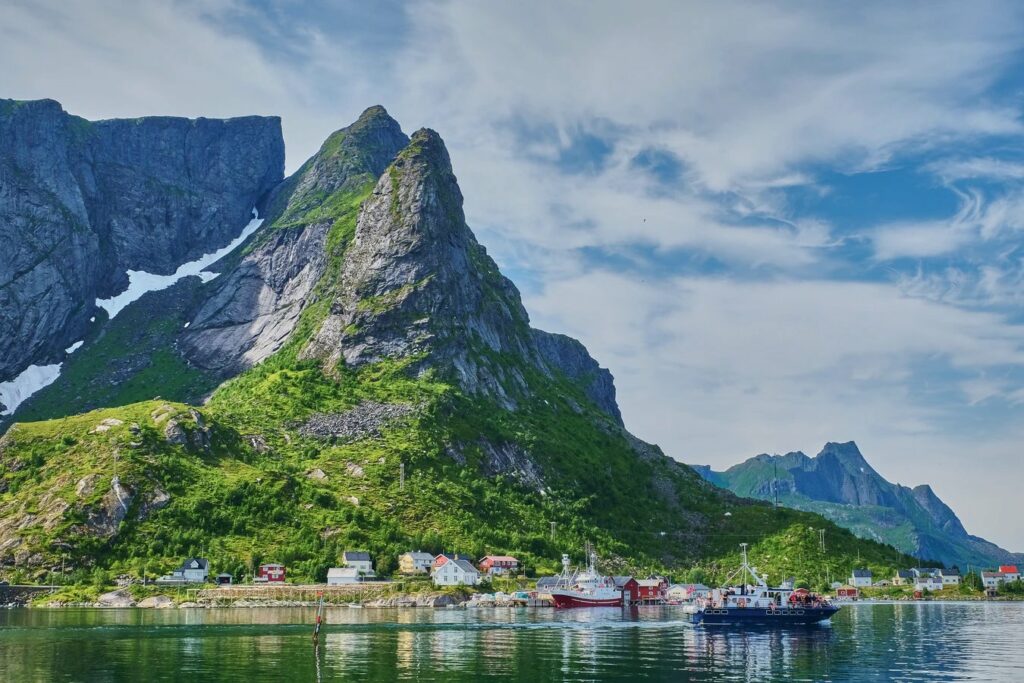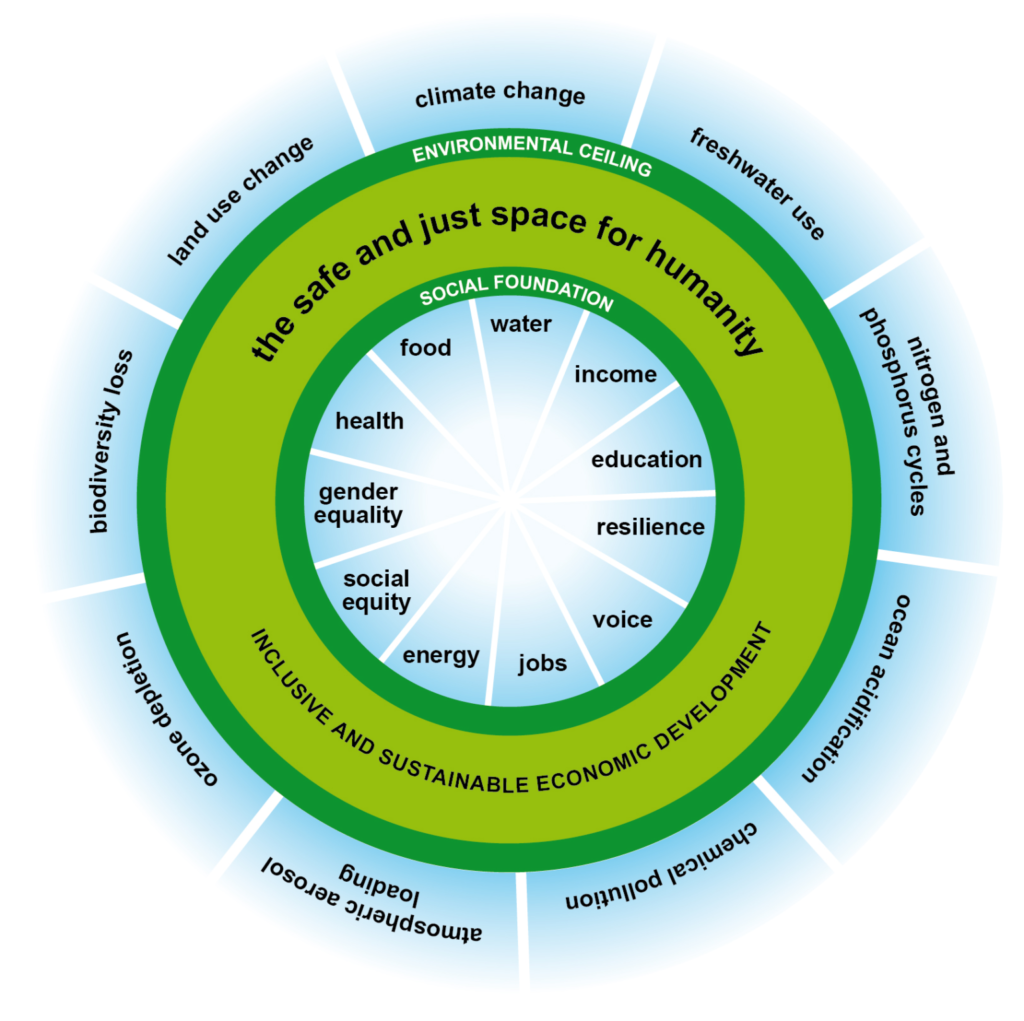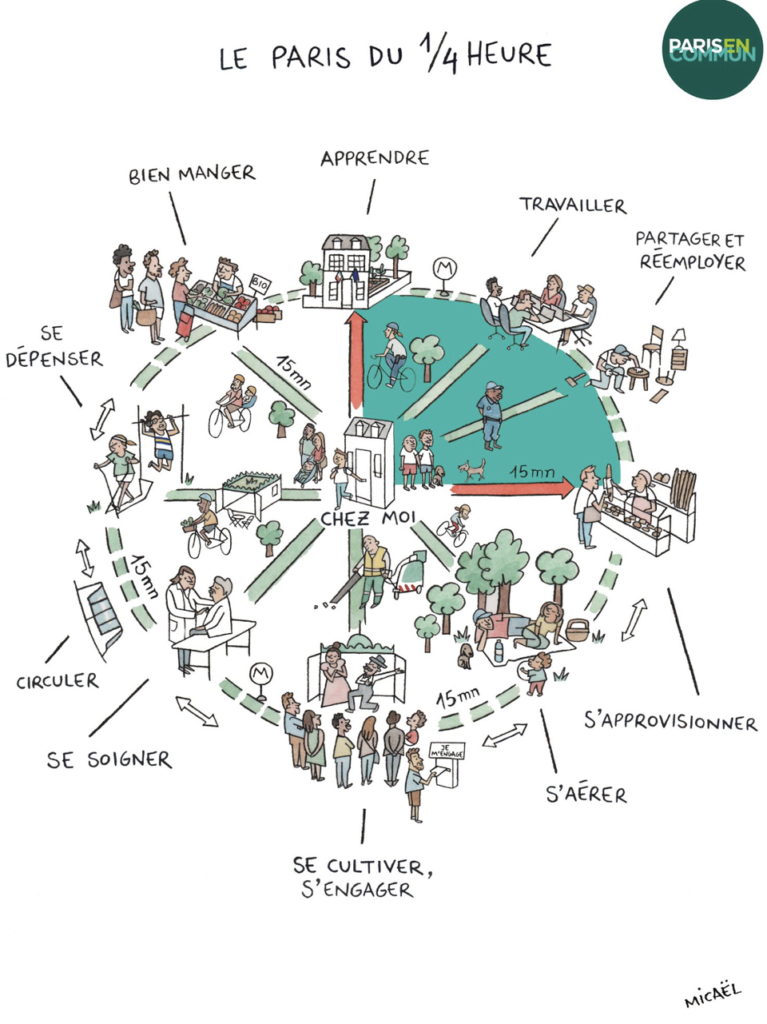
This is a second instalment on ruralization. It has been in development since 2020-07-14. Work on it was paused on 2020-08-11, but resumed again 2020-10-28. It reflects a state of mind de-stabilized (de-socialized?) by a pandemic during the summer of 2020.
With COVID-19 under-employing and unemploying people as well as shuttering businesses temporarily or permanently, faster than almost any time in the past century, it is time to reconsider what can be done to help people secure their well-being.
Well-being means that people will need access to potable water, nutritious food, appropriate clothing, adequate shelter, education and health care. Entertainment and cultural pursuits will also have to be included, but that does not mean supporting personalities and products promoted by an entertainment industry. Similarly, there will undoubtedly be a need for transportation, but not necessarily using cars or mass transit. Walking and cycling may be preferred. Exercise may be part of one’s commute, or a substitute for it, rather than membership in a gym. The office seems to be a casualty of the pandemic. Yet, there are conflicting opinions as to where it is dead, or just crippled.
On 2020-07-14 Ivanka Trump gave millions of recently unemployed Americans new hope, when she said, “Find something new.” So that is what is being presented here, except that it is actually hard work to find something completely new, so this weblog post will cheat, and pretend that survival/ prepping is something new.
Note: the number of unemployed in the US is difficult to ascertain. Many are trying to define out large groups of people, while others are trying to define in similarly large numbers. Danielle Echeverria writing in the San Francisco Chronicle states that the total unemployment claims filed since the beginning of the pandemic have moved up to 51 million (as of 2020-07-17), and the situation is still not optimistic since the complete reopening keeps being postponed.
Survivalism
With large countries such as USA, Brazil and the United Kingdom having failed to serve the needs of their residents, especially keeping them healthy, As this is being written, these and other countries are experiencing a second (or higher) wave of COVID-19 infections. Thus, survivialism has become a key thought in almost everyone’s mind. Part of the challenge, in some countries, has been the outsourcing of vital elements of pandemic health care, such as contact tracing, and the conflict between doing thorough work, and making a profit. Far too frequently, profits and disease transmission prevail at the expense of health and, even, economic well being.
From the Great Depression that started in 1929, through the World War II and the Cold War, people have given consideration to their survival, especially in the event of war. That all stopped in 1990, when the United States and its allies declared themselves the victors of the Cold War. This meant that the preparedness for war (which incorporates preparedness for other emergencies, including pandemics) was gradually discarded.
Many boomers experienced the Great Depression vicariously, by being a child of parents who had lived through it. They lived in homes with reserves of food and other items that were rotated, but never used up. They were there in case of an emergency. While clothing that had been outgrown would be recycled, old clothes that still fit and not worn out were seldom discarded, but saved in case they came in handy at some unspecified time in the future. This vicarious remembrance of the depression and World War II is something that distinguishes boomers from subsequent generations. Is this what has turned them into collectors (and some into savers), traits some find lacking in the younger people?
In contrast, the Cold War was something boomers (and some Gen Xers) experienced more directly. Wikipedia tells us, “The Cold War was a period of geopolitical tension between the Soviet Union and the United States and their respective allies, the Eastern Bloc and the Western Bloc, after World War II. The period is generally considered to span the 1947 Truman Doctrine to the 1991 dissolution of the Soviet Union.” It was also a period when survivalism/ prepping was accepted practice at every level of society. In the thirty years since the cold war ended, preparation had become a meaningless topic, until the global COVID-19 pandemic hit. Yet, once it hit, survival has been a major focus.
Survivalism, or prepping, means different things to different people. There are a number of different categories listed by Wikipedia: Safety-preparedness with an emphasis on surviving life-threatening situations that can occur at any time and anywhere; Wilderness survival, with scenarios that include plane crashes, shipwrecks, and being lost in the woods, where concerns include thirst, hunger, climate, terrain, health, stress, and fear; Self-defense, with an emphasis on surviving violent encounters, with a need for personal protection and self-defence skills; Natural disaster – brief (typically days to months in duration), with tornados, hurricanes, floods, wildfires, earthquakes or heavy snowfalls causing problems; Natural disaster – prolonged (2 – 10 years), with an emphasis on weather cycles and crop failures; Natural disaster – indefinite/ multi-generational, potentially caused by global warming or other forms of environmental degradation; Monetary disaster with concerns about the worth of paper money, and a suggestion to replace it with gold and silver; Biblical eschatology, waiting for the return of Christ; Peak-oil doomers, who have much in common with Rawlesians (followers of James Wesley Rawles) who prepare for multiple scenarios with fortified and well-equipped rural survival retreats. Their northern inter-mountain region includes Washington, Oregon and California, the entire states of Idaho, Nevada and Utah, western Montana, Wyoming and Colorado, northern Arizona and north-western New Mexico. They emphasize self-sufficiency and homesteading skills; Legal-continuity, with an emphasis on maintaining some form of legal system and social cohesion. Bio-chemical survivalism, is where the current pandemic would be classified, along with diseases occurring naturally or as part of a weapon system.
The Marmots, not the rodents, but members of a hypothetical family of humans, will be used as examples. Some call Cascadia home, others live in Cooth in eastern Canada, or in Bust Anvil, in the rust-belt in the great state of Forge, a few even live in Ginnunga Gap, where this post is being written.
Jade Marmot – the wrong approach
Jade Marmot doesn’t know much, but that has never stopped him. He carries an assortment of business cards with him, each with a different job title. The one he uses most often describes him as a publicist. He takes facts collected and analysed by other people, mixes them with his own special brand of fiction, then presents them on websites, from which he tries to sell somewhat related products or services. Several of these relate to travel, but when cases of COVID-19 started, visits to these websites declined. In response, he regarded the pandemic as a golden profit-making opportunity. He didn’t have any clear idea of what he would be able to offer. Google is the most obvious place to begin, so that, even if he fails, at least Alphabet Inc (GOOG) will be able to profit from his misadventure. That said, he used the Duckduckgo search engine with a Mozilla Firefox web browser, to find information on survivalism. This led him to the Graywolf Survival website, a typical wilderness survival website, and to its article, Prepping: 10 simple ideas on how to start.
Imagine for a moment, that someone like Jade, with approximately zero prepper experience, no military background, and limited survival skills, tried to set up an alternative website to Graywolf. Jade Marmot Survival, will not become the prepper website of choice, for the pandemic. Wilderness survival is not what most people are seeking. Sensible people who do want wilderness survival tips will stick to Graywolf, because Jade Marmot will be unable to provide the insights they need. Jade’s lack of knowledge about pandemics means that he will be unable to contribute anything of value, to help people cope with an evolving situation. Instead, he will offer them hydroxychloroquine, an anti-malaria drug with no documented positive effect on COVID-19.
Is there hope for Jade? A change of attitude can change everything, especially if that change involves a sincere willingness to be of service to others. There are no lost souls.
Honey Marmot
Honey Marmot has been a musician all of her adult life, performing live at clubs, not just in the village of Harmony, but other places near Cooth. Yet, with bars and restaurants closed, opportunities to perform ceased to exist. Unemployed, Honey started to devote more of her time to cooking, and – as spring arrived – to gardening.
She also noticed that with restaurants being closed, many people were having a hard time feeding themselves, choosing to buy junk food rather than making something nutritious.
As a musician, Honey was used to being part of a band. She did her thing, while others did theirs, and in a spirit of co-operation, the collective result was always something bigger and better than any of them could do alone. Contacting a few close friends, they were able in very short time to set up the Harmony Food Collective. It quickly evolved so that some people who had space for a garden, were able to grow crops. Others were able to use the ingredients produced to make nutritious food at a local church, producing 1 500 meals for the needy each week. Yet more people were involved in the distribution process, using an assortment of feet, bikes and cars.
Vernon Marmot
Vernon is a complex person. He grew up in Bust Anvil, in the state of Forge. It was a place where boys aspired to be quarterbacks, and mothers expected daughters to become cheer leaders. Early on, Vernon adopted the name Slime, in order to hide what he described as a peculiar characteristic. While refusing to try out for the football squad, he did attend a trade school, became an automotive mechanic, and started working at T’s Garage.
Yet, under a hyper-masculine exterior, Vernon/ Slime had a secret life. His peculiar characteristic was a passionate interest in fashion. He not only subscribed to GQ (Gentleman’s Quarterly), and Dark Beauty Mag, but avidly read the works of DCB Pierre (1961 – ), including the latest, Meanwhile in Dopamine City (2020) a satirical dystopian novel about Lonnie, a widowed sewage worker, struggling to raise two children in a time of unencumbered digital innovation. In order to avoid being seen entering shops at the Fairlane Mall, he bought a Bernina 790 Plus sewing machine so he could make his own clothes.
Starting out with Steampunk fashions, he soon realized that Dieselpunk might be more acceptable in the circles he frequented. Tailoring punk fashions may not be on a freeway to fortune or even fame, but for Vernon/ Slime that is of secondary (or lower) importance. These activities are necessary to help him keep his sanity. In time, he will learn that others appreciate his values, and his blue Hush Puppy shoes.
Repair Cafe
Through the power of imagination, visualize the personas presented living in a small rural community. Import the people mentioned above, and find a few others in the local community with attitude, and a new infrastructure will start to emerge. It is not just what is present in the community that will propel action, but what is missing.
Once something basic, like a food collective, is started, people will notice other needs that are not being met. There is an obvious need for a Repair Cafe. With a use and discard mindset, products get used and discarded, even before their productive life is over. A Repair Cafe encourages consumers to have poorly performing products fixed by community technicians, so that these products will have a longer longevity.
Different people can take on different tasks. Jade actually has some positive attributes. He became obsessed with woodworking. Owning a range of tools, of various types: manual, mains electrical, battery electrical, as well as pneumatic, for different purposes. He is able to help people with their woodworking and basic construction needs. While Honey spends most days growing and cooking food, she finds time to ensure that the Repair Cafe has the ingredients it needs. Since Vernon thrives with textiles; weaving, knitting and sewing in particular, he is been able to help people with their clothing related challenges.
Tools are a means to an end. They are less interesting in themselves than the processes used to make and repair things. Both are necessary prerequisites to manufacturing and repurposing products and providing services in rural areas.
While a Repair Cafe, and similar institutions, provide a framework for people to work together, it is not essential. Individuals, working alone, can make an assortment of products, and provide any number of services for themselves, their families and for others.
Activities
In Norway a shed (or similar structure) of up to 15 square meters = 161.4587 square feet can be built without a building permit. This means that it is possible for families to build themselves a greenhouse that could provide much of the food needed for their family. It is also possible to add an additional 15 square meters to an existing house, again, without a building permit. For many families this expansion will be necessary, for two adults (and up to several children) to have sufficient office space to work from home.
Among the more positive benefits of the Internet is that it provides opportunities for people to develop relationships with others who have similar interests, to access knowledge and to learn new skills. Learning how to build sheds, or made additions to a house, or to grow fruit and vegetables in a greenhouse can be provided by videos and other materials found on the Internet. There are also numerous forums where assistance with problems can be found, and insights shared.
These are not perfect resources. Recently, the Norwegian Broadcasting Corporation (NRK), had a major story (in Norwegian) about an older, male paedophile using sophisticated technology so that he appeared to be a teenage girl. Unfortunately, there will always be people on the Internet trying to take advance of others. Thus, it is a resource that has to be used cautiously.
In particular, with respect to computing issues, some users focus on telling people what they have done to solve a particular problem, but not why or even how. This is not pedagogically sound. I suspect that these advisors lack the necessary knowledge/ insight/ foundation to give such advice. They are simply offering a formula that could result in a solution, but often doesn’t. “Well, it worked for me.” is not a particularly helpful statement, It does not lead anyone to a better understanding of the situation.
Regardless of the advice being offered, it is useful to fact check it, using up to several sources. The Internet does not offer any guarantees.
Another problematic area involves Facebook. Their business model is based on segmenting and clustering people based on attitudes, which is determined by the posts particular people like, or avoid liking. Clusters are based on sets of mutual likes. Information/ propaganda is presented that reinforces current (prejudicial?) attitudes. Thus, information is presented that closely mirrors the current world view of any particular user. Alternative world views are avoided. To counter this, it is my hope that people will spend less time on Facebook, and more time in forums dedicated to their special interests. To find these one can search with that specific topic, followed by forum and, optionally, a location such as a country, province or state. For example, knitting forum canada. One link provided information on 35 Canadian blogs and websites.
Last minute update: Sea Shanties
Living in a rural community, does not mean that one has to forego the company of like-minded souls. During the pandemic, people – even in the most densely populated of cities – have felt isolated. Thus, it is interesting to see one unexpected trend that has emerged on TikTok, the social media site that Donald Trump attempted to ban. Some attribute Glasgow area postman, Nathan Evans, of starting the trend with, Soon May The Wellerman Come. For information about this project, and more, see this Guardian article.
Others have followed through, such as The Longest Johns, a Mass Choir Community Video Project. Five hundred people submitted their versions of Leave Her Johnny.
End Notes
- If some subscribers find an essence of themselves in this weblog post, it is probably not a co-incidence. I have deliberately tried to portray some of the positive work being done by others during the pandemic, while fictionalizing lives. Genders, and other identifying characteristics, have been changed. No prizes will be awarded to anyone for identifying: Cascadia, Cooth, Bust Anvil, Forge or Harmony. Ginnunga Gap is not just Cliff Cottage, but also the workshop (former garage) at Vangshylla, Inderøy, Norway. (63° 50′ 31.08″ N 11° 05′ 26.57″ E)
- Not impressed with the humour here? Fortunately, there are two types of people: the many who do not appreciate this humour, and the others, who don’t believe it is humour. Choose one, none or both. We are living through a pandemic, and for better or worse, humour has become a survival mechanism.



